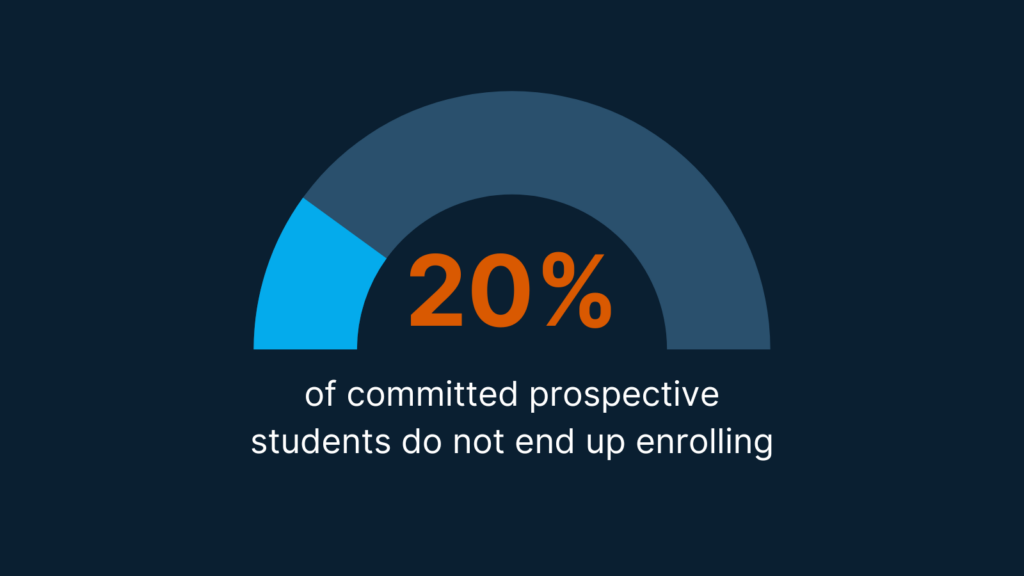
“I have been trying to enroll for a year now,” writes an aspiring student. “I tried getting assistance and guidance from an advisor. I did not receive help.”
This student was admitted to their college of choice, but they hit a roadblock when their questions about the enrollment process went unanswered.
In a non-matriculation survey administered by Trellis Strategies, they clearly stated their frustration and desire to go to college: “I felt discouraged, and I am still trying to enroll in school. If I had help, I would be attending currently.”

How to Increase Enrollment in Higher Education
Approximately 20% of committed prospective students—those who are accepted to an institution and take some steps towards attendance—do not end up enrolling. These aspiring students frequently report challenges in communicating with admissions and other staff, technical difficulties during registration, and concerns about paying for college.
During this stressful period of transition, a single roadblock can mean that an otherwise engaged and excited student is unable to pursue further education.
Use Project Management Principles to Track the Student Journey
Students need a clear framework to guide them from admission to the first day of class.
Enrollment should appear to the student as a unified, college-wide process, not a disjointed series of engagements with different offices and departments.
To support this, institutions should use principles from project management and customer service to track each student’s journey and improve the enrollment experience. All offices with a stake in new student onboarding must coordinate with each other behind the scenes to complete goals and monitor progress across the institution.
Research and practitioner experience support three key principles:
- Use internal tracking tools to coordinate enrollment steps between offices;
- Audit enrollment processes intending to simplify and streamline requirements;
- Establish effective, frequent communication with incoming students.
Enrollment Tracking Reveals These Gaps for Institutions
The process of coordinating enrollment steps internally (Trellis Strategies offers an Enrollment Tracker to assist with this coordination) will often reveal which parts of the process pose the biggest hurdle for incoming students. Admissions, financial aid, housing, student accounts, and other teams can respond to this by improving student communications during these stages.
Proactive outreach from institutional staff—whether through two-way text engagement, customized enrollment checklists during orientation, or a bridge program in collaboration with a feeder school district—can help prospective students understand requirements, manage deadlines, and successfully pursue their education goals.
Crucially, outreach initiatives must include pathways to quickly respond to student questions.
Ease the Frustrations for Modern Learners
For aspiring college students, getting admitted to their school of choice is only the first step. Many modern learners—especially first-generation college students and those returning after a gap in formal education—don’t have a clear road map to navigate placement exams, housing placement, complex financing decisions, and other crucial enrollment tasks.
Despite the financial and demographic challenges facing higher education, many campuses can increase their enrollment yield by focusing on inter-office coordination, streamlined admissions processes, and clear student communication.
May Helena Plumb is a social scientist committed to accessibility and equity in education. Prior to joining Trellis Strategies, she was a co-author of the Ticha Project, an interdisciplinary team of scholars who develop educational resources for Indigenous learners, using research as a tool to build community and achieve stakeholder goals.
At Trellis, May leverages her research experience to support data-driven solutions for institutions of higher education to foster student success. May holds an M.A. in Linguistics from The University of Texas at Austin and is currently pursuing a Ph.D. from the same department.